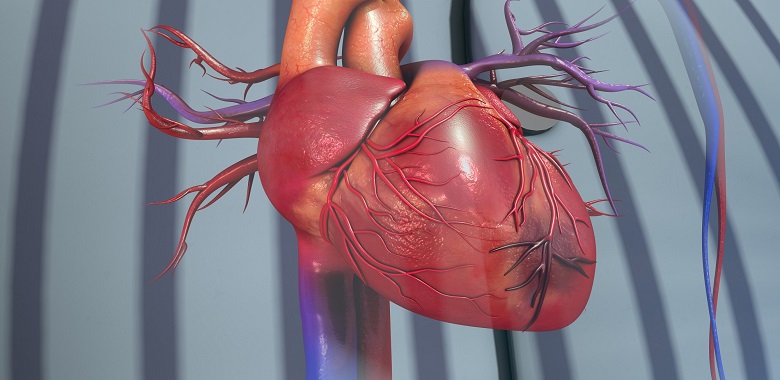
Occlusion of a large and proximal vessel may lead to myocardial ischaemia of such an extent that the patient dies rapidly of pump failure.
A. Immediate management
Routine use of a sedative (e.g., Diazepam) is not recommended unless the patient is extremely anxious.
- Morphine: 2.5-10 mg intravenously (IV) with repeat doses as necessary
And
- Glyceryl trinitrate: 600 µg sublingually with a repeat dose in 5 minutes if no response
It should not be administered in patients with hypotension and suspected right ventricular infarction.
B. Limiting infarct size
Antiplatelet and anticoagulant co-therapies in patients undergoing primary percutaneous coronary intervention (PCI)1 –
- Aspirin: Loading dose of 150-300 mg orally or 75-250 mg IV (in patients who are not on an Aspirin maintenance dose), followed by a maintenance dose of Aspirin, i.e., 75-100 mg/day. It should be given before primary PCI. After PCI, Aspirin should be continued indefinitely.
A loading dose of a P2Y12 receptor inhibitor should be given immediately or at the time of primary PCI to patients with ST-segment elevation myocardial infarction (STEMI). Dual antiplatelet therapy, combining Aspirin and a P2Y12 inhibitor (i.e., Prasugrel, Ticagrelor, or Clopidogrel), is recommended in patients with STEMI undergoing primary PCI for up to 12 months.
- Clopidogrel: Loading dose of 600 mg orally, followed by a maintenance dose of 75 mg/day
- Prasugrel: Loading dose of 60 mg orally, followed by a maintenance dose of 10 mg/day. In patients with a bodyweight ≤60 kg, a maintenance dose of 5 mg/day is recommended. In patients ≥ 75 years, it is not recommended, but a dose of 5 mg/day can be used.
- Ticagrelor: Loading dose of 180 mg orally, followed by a maintenance dose of 90 mg twice daily.
Intravenous glycoprotein (GP) IIb/IIIa receptor antagonists, such as
- Abciximab: Bolus of 0.25 mg/kg IV and 0.125 µg/kg/minute infusion (maximum 10 µg/minute) for 12 hours.
- Tirofiban: 25 µg/kg over 3 minutes IV, followed by a maintenance dose of 0.15 µg/kg/minute up to 18 hours.
- Eptifibatide: Double bolus of 180 µg/kg IV (given at a 10-minutes interval), followed by an infusion of 2 µg/kg/minute for up to 18 hours.
Parenteral anticoagulant therapies in primary PCI:
- Unfractionated Heparin (UFH): 70-100 IU/kg IV bolus when no GP IIb/IIIa inhibitor is planned; 50-70 IU/kg IV bolus with GP IIb/IIIa inhibitors.
- Enoxaparin: 0.5 mg/kg IV bolus
- Bivalirudin: 0.75 mg/kg IV bolus, followed by IV infusion of 1.75 mg/kg/hour for up to 4 hours after the procedure.
Antiplatelet therapies in patients not receiving reperfusion therapy:
- Aspirin: Loading dose of 150-300 mg orally, followed by a maintenance dose of 75-100 mg/day
- Clopidogrel: Loading dose of 300 mg orally, followed by a maintenance dose of 75 mg/day orally
Parenteral anticoagulant therapies in patients not receiving reperfusion therapy:
- UFH: 60 IU/Kg IV bolus with a maximum of 4000 IU, followed by an infusion of 12 IU/kg with a maximum of 1000 IU/Hour for 24-48 hours.
- Enoxaparin: In patients below 75 years, 30 mg IV bolus followed 15 minutes later by 1 mg/kg subcutaneously (SC) every 12 hours until revascularisation or hospital discharge for a maximum of 8 days. The first two SC injection dosage should not exceed 100 mg/injection. In patients ≥75 years, no IV bolus should be given. Subcutaneous dose of 0.75 mg/kg with a maximum of 75 mg/injection for the first 2 SC doses.
- Fondaparinux (only with Streptokinase): 2.5 mg IV bolus, followed by an SC administration of 2.5 mg once daily for up to 8 days or hospital discharge.[1]
Other measures:
- Oxygen: 4-6 L/minute by mask
- Fibrinolytic therapy [Used in chest pain that has developed within the previous 12 or preferably 6 hours with either development of new left bundle branch block (LBBB) or STEMI]:
- Streptokinase: 1.5 million International Units (IU) by IV infusion over 30-60 minutes. If blood pressure falls due to infusion, the rate should be reduced or stopped temporarily and restarted at a dose of half the previous rate.
- Alteplase: 15 mg IV bolus;
0.75 mg/kg IV over 30 minutes (maximum 50 mg), followed by 0.5 mg/kg IV over 60 minutes (maximum 35 mg).
- Reteplase: 10 units+10 units IV bolus given 30 minutes apart
- Tenecteplase: Single IV bolus:
30 mg (6000 IU) if < 60 kg;
35 mg (7000 IU) if 60 to < 70 kg;
40 mg (8000 IU) if 70 to <80 kg;
45 mg (9000 IU) if 80 to < 90 kg;
50 mg (10000 IU) if ≥ 90 kg;
it is recommended to reduce to the half dose in patients ≥ 75 years.[1]
- For mild or moderate allergic reactions to Streptokinase:
• Promethazine: 25 mg IV
Or
• Hydrocortisone: 100 mg IV
- For severe allergy:
• Adrenaline: 1 in 1,000 solution, 0.5-1 ml (0.5-1 mg) IV over 5 minutes
If response is poor:
• Adrenaline: 1 in 1,000 solution 2-5 ml (2-5 mg) IV over 5 minutes
And should be added:
• Promethazine: 25 mg IV
Or
• Hydrocortisone: 100 mg IV
C. Management in the post-infarct period
i. Beta-blockers (continued indefinitely)
• Atenolol: 25-100 mg orally daily
Or
• Propranolol: 40-80 mg orally 2-3 times daily
ii. Angiotensin-converting enzyme inhibitors (ACEIs)
• Enalapril: 5-40 mg orally daily
iii. Statins
Clinical trials have supported a combination of lifestyle modification and continuous treatment with Aspirin, beta-blocker, a statin, and, in many cases, ACEIs in the treatment of myocardial infarction.
Citation
- a, b Ibanez B, James S, Agewall S et al. 2017 ESC Guidelines for the management of acute myocardial infarction in patients presenting with ST-segment elevation: The Task Force for the management of acute myocardial infarction in patients presenting with ST-segment elevation of the European Society of Cardiology (ESC). Eur Heart J. 2018;39(2):119-177. doi: https://doi.org/10.1093/eurheartj/ehx393
https://academic.oup.com/eurheartj/article/39/2/119/4095042